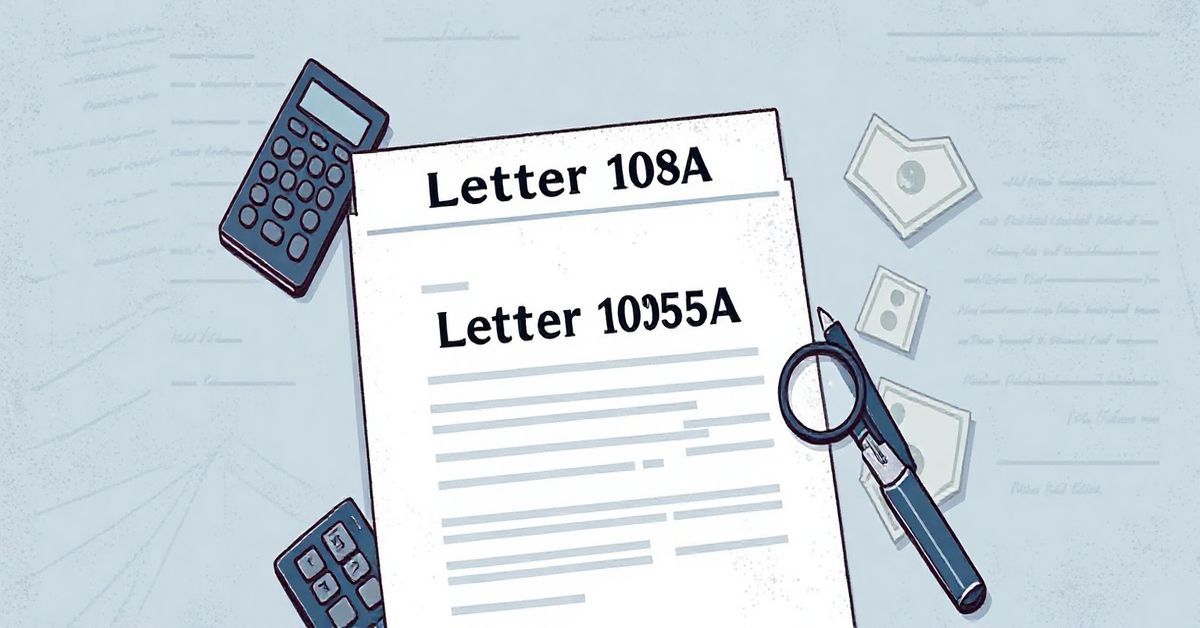Understanding the IRS Letter 1058A: Notice of Intent to Levy on Specific Property
Have you ever received a piece of mail that made your heart skip a beat? For many, receiving an official letter from the IRS can be quite alarming. Among those, the IRS Letter 1058A is a particularly serious one. This letter isn’t just a reminder about unpaid taxes; it’s a notice that the IRS is preparing to take action and seize your property. Let’s break it down and see what it really means for you.
What Does “Levy” Mean?
Before diving into the specifics of Letter 1058A, let’s clarify the term “levy.” In the world of taxes, a levy is a legal seizure of your property to satisfy a tax debt. Think of it as the IRS’s way of saying, “You owe us, and if you don’t pay, we’re going to take something of yours that’s worth what you owe.”
Why Would the IRS Send Letter 1058A?
Background on Tax Collection
The IRS doesn’t start with a levy. The process generally goes like this:
* Unpaid Taxes: First, you don’t pay your taxes on time, or you underpay.
* Notice of Taxes Due: The IRS sends you a notice that you owe money, along with penalties and interest.
* Demand for Payment: If you still don’t pay, they will send you a more urgent notice, demanding payment.
* Intent to Levy: Finally, if you don’t respond or arrange payment, the IRS will send you a Notice of Intent to Levy. This letter is not a surprise, but it’s a sign to act quickly, as this notice is required before they can levy your property.
Specific Triggers for Letter 1058A
The specific trigger for Letter 1058A is that the IRS has identified particular assets that it intends to seize to satisfy your tax debt. This means they’ve gone beyond a general “you owe” notice and are focusing on specific property they believe you own. This could include bank accounts, wages, vehicles, or even real estate. This type of levy targets a specific property. Unlike a general levy, where they could seize any property, this is targeted at particular assets.
How Does Letter 1058A Work?
Key Components of the Letter
Letter 1058A is not something to ignore. It includes several critical pieces of information:
- Your Identification: It will state your name, address, and Taxpayer Identification Number (TIN), such as a Social Security number (SSN) or Employer Identification Number (EIN).
- Tax Debt Details: It details the specific tax years and the amounts you owe, including penalties and interest.
- Specific Property: This is the most crucial part. The letter will list the particular property the IRS intends to levy.
- Timeframe: It will give a deadline, typically 30 days after the letter’s date, for you to respond and make arrangements to resolve the debt.
- Contact Information: It will provide contact information for the IRS representative handling your case.
- Your Rights: It will also include information about your rights.
The 30-Day Window
You generally have 30 days from the date of the letter to respond. This is the crucial window to take action. Ignoring this letter will likely result in the IRS proceeding with the levy and seizing the assets listed.
What Happens After the 30-Day Period?
If you don’t respond to the IRS within 30 days, the IRS can legally seize the specified property. For instance:
* Bank Accounts: The IRS can order your bank to hand over the funds in your account.
* Wages: The IRS can garnish your wages directly through your employer.
* Vehicles and Real Estate: The IRS can seize these assets and sell them to satisfy your tax debt.
The IRS will continue the collection process until your debt is settled.
Who Is Affected by a Notice of Intent to Levy?
This letter affects individuals and businesses with unpaid tax liabilities where the IRS has identified specific property they intend to seize. Whether you are a small business owner, a freelancer, or an employee, if you owe taxes and have assets, you could receive this notice.
What Should You Do If You Receive an IRS Letter 1058A?
Don’t Panic (But Don’t Delay)
Receiving a Letter 1058A can be stressful. However, it’s crucial to take action immediately. Here’s what you should do:
- Review the Letter Carefully: Make sure that the information in the letter is correct. Are the tax years accurate? Is the listed property actually yours? Are the tax amount correct?
- Contact the IRS: Contact the IRS using the information provided in the letter. Do not ignore this. Explain that you received the letter and want to discuss your options. You can call the number on the letter or go to an IRS office.
- Gather Financial Information: Prepare a detailed financial overview, including your income, expenses, assets, and debts. The IRS will need this to assess your ability to pay.
- Consider Payment Options: Discuss payment options with the IRS. Here are a few possibilities:
- Full Payment: If possible, pay the full amount owed to avoid further collection actions.
- Installment Agreement: This allows you to pay the tax debt over a period of time, often with monthly payments.
- Offer in Compromise (OIC): In some cases, the IRS might agree to settle your debt for less than what you owe if you are in serious financial hardship. This is complex, and it is usually best to get help for this.
- Hardship Relief Sometimes, a tax payer can get help with a collection due to hardship. This is not guaranteed, but the IRS can grant collection relief.
- Professional Help: Consider consulting a tax professional, such as a tax attorney or an enrolled agent. They can help you navigate the IRS maze and negotiate the best possible outcome for your situation. This is strongly recommended if you feel overwhelmed or lost.
Document Everything
Keep careful records of all communications, documents, and payments made with the IRS. This will help if there are any future disputes.
Common Mistakes and Misconceptions About Letter 1058A
Mistake 1: Ignoring the Letter
The biggest mistake you can make is ignoring the letter. It won’t make the problem go away. In fact, it will only make the situation worse. Failure to respond can lead to the seizure of your property.
Misconception 1: The IRS is Always Wrong
While it’s possible the IRS might make a mistake, assuming the letter is entirely wrong is not helpful. It’s better to review the information carefully, identify any errors, and address them in your communication with the IRS.
Misconception 2: The IRS Can Take Anything
The IRS is not allowed to take certain types of property. For example, they generally can’t seize certain types of exempt property, like specific personal belongings or public assistance funds. But you should still pay attention to what it says they intend to seize because the list may be valid.
Misconception 3: It’s Too Late To Do Anything
It’s not too late to do something as long as you have not exceeded the deadline. You can usually negotiate a payment plan or other options, even after receiving this letter. But you must act quickly.
Related Terms to Understand
- Tax Lien: A claim against your property for unpaid taxes. A levy often follows a tax lien if the lien is not satisfied.
- Tax Levy: A legal seizure of your property to satisfy a tax debt.
- Garnishment: A legal procedure for taking a portion of your wages to pay a debt.
- Offer in Compromise (OIC): An agreement with the IRS to settle your tax debt for a reduced amount.
- Installment Agreement: A payment plan that allows you to pay off your tax debt over time.
Final Thoughts
Receiving an IRS Letter 1058A is certainly a serious matter, but it’s not the end of the world. By understanding what the letter means and taking the appropriate steps to address your tax debt, you can work toward resolving the situation. Don’t wait; act today. Reach out to the IRS, seek professional guidance, and explore your options to find the best way forward.

